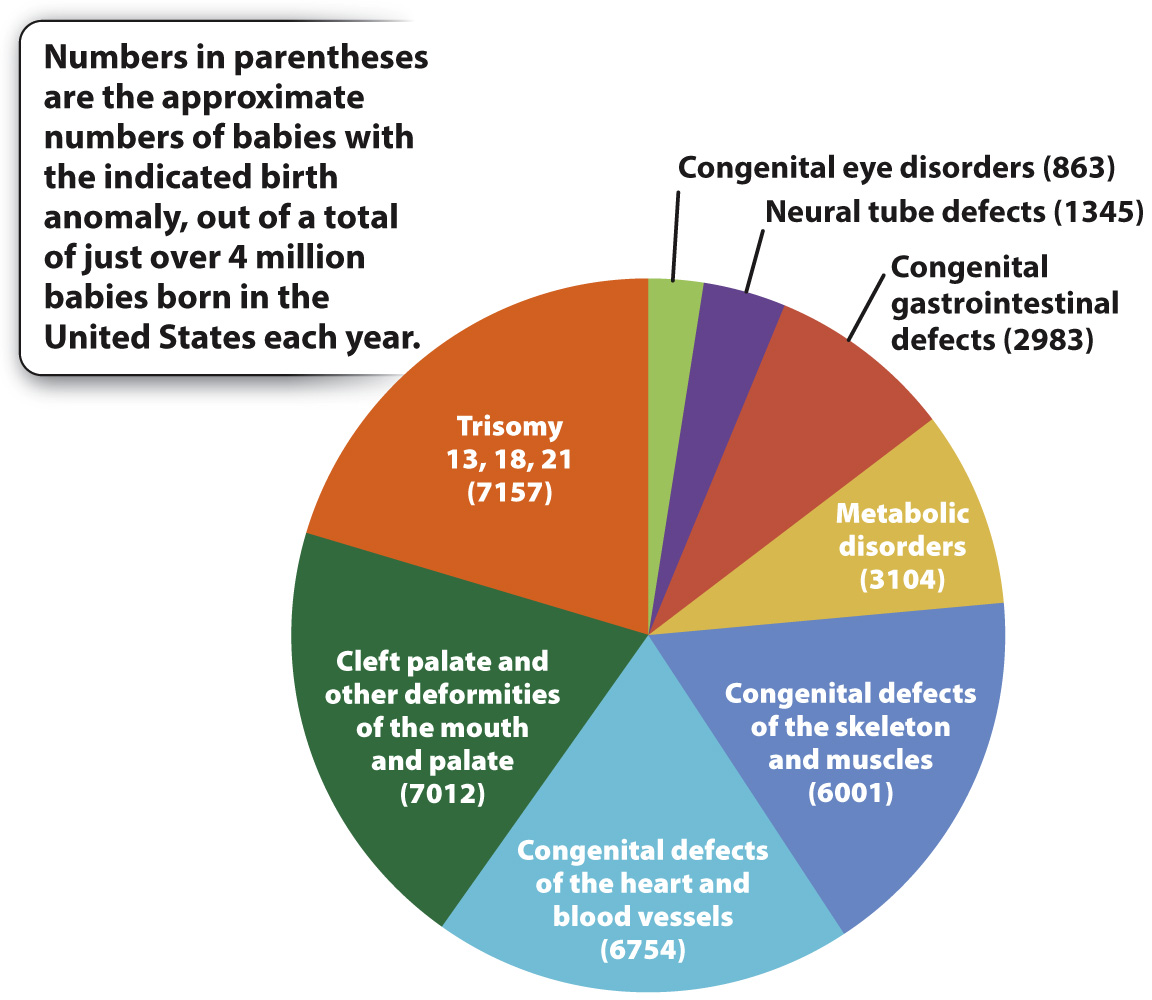18.4 Complex Traits in Health and Disease
Much evidence beyond twin studies implies an important role for particular alleles as risk factors for diabetes, high blood pressure, asthma, rheumatoid arthritis, epilepsy, schizophrenia, clinical depression, autism, and many other conditions. These are all complex traits, affected by genotype, environment, and genotype-by-environment interactions.
Even the most common birth defects are affected by multiple genetic risk factors. The most common birth anomalies and the numbers of affected babies born in the United States each year—collectively more than 35,000—are indicated in Fig. 18.11. About 20% of these anomalies are due to an extra chromosome. Trisomy 21 (Down syndrome) is by far the most common of these chromosome-number abnormalities. Another roughly 10% are due to defects in metabolism, many of which—among them cystic fibrosis, sickle-cell anemia, and phenylketonuria (the inability to break down the amino acid phenylalanine)—are rare simple Mendelian disorders. Birth anomalies due to extra or missing chromosomes and those due to single-gene Mendelian inheritance are not considered complex traits in terms of their inheritance. Together these account for about 30% of the of birth anomalies in Fig. 18.11. The majority (70%) of birth anomalies in Fig. 18.11 are inherited as complex traits that are affected by both genetic and environmental risk factors.

FIG. 18.11 Incidence of the most common birth anomalies. Data from Centers for Disease Control and Prevention; National Newborn Screening and Genetics Resource Center; March of Dimes.
Data from Centers for Disease Control and Prevention; National Newborn Screening and Genetics Resource Center; March of Dimes.
